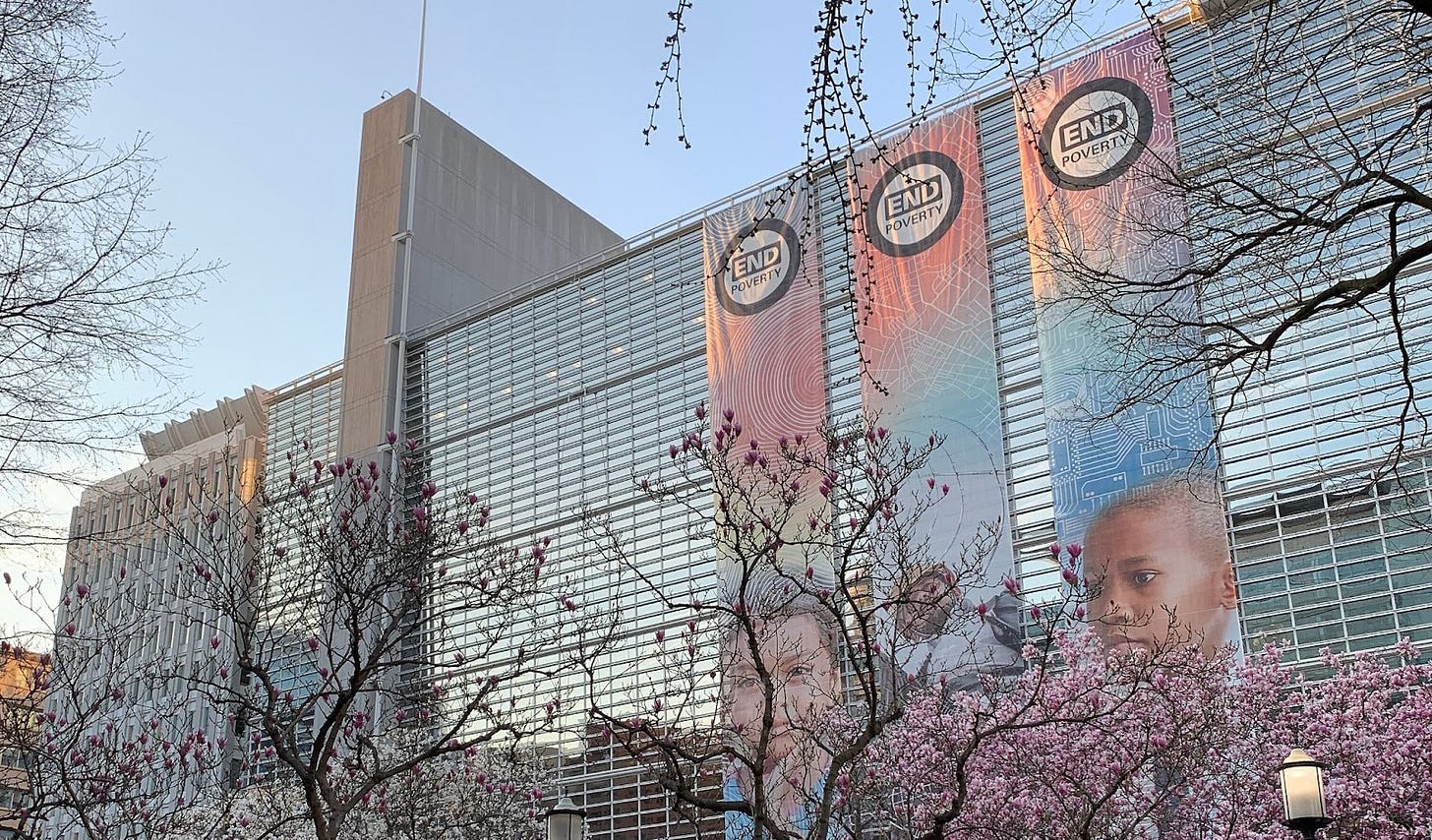The World Bank is Not Driving Economic Growth
Much of the institution's activity amounts to funding bureaucracies or providing charity. Prioritizing fashionable causes further reduces the likelihood of spurring industrial development.

The World Bank Group refers to five related international organizations headquartered in Washington, D.C. that collectively supply loans and grants to the governments of middle-income and low-income nations in order to finance economic development. The term “World Bank” is typically applied only to the two largest organizations within the group, the International Bank for Reconstruction and Development (IBRD) and the International Development Association (IDA). The IBRD is the original World Bank, founded in 1944 in the aftermath of the Bretton Woods conference. The IDA was founded in 1960, and the two institutions share staff and leadership, although they have different remits and funding structures.1 Between the IBRD and the IDA, the World Bank approved $72.8 billion of loans and grants in fiscal year 2023, across 322 planned and ongoing operations in ninety countries.2 The World Bank Group employs over 13,000 staff, with around half of them based in the U.S. and the rest in a network of 141 field offices.3 Since their establishment, the IBRD and IDA have together cumulatively loaned nearly $1.5 trillion.4

